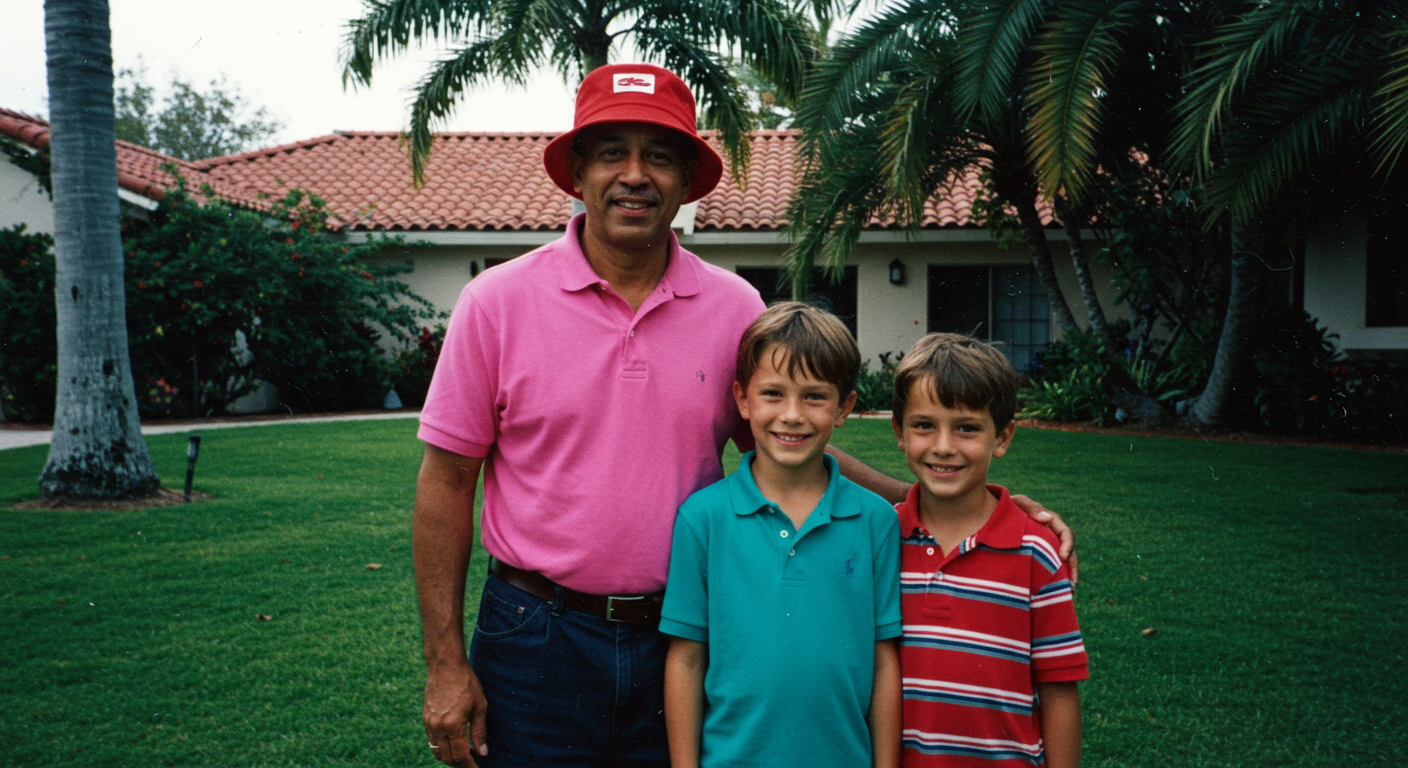
“What do you think my house is worth?”
It is a question I have heard again and again. On most occasions, it is really the single most important issue anyone selling a home wants to address. Sure, they’ll sit and politely listen to your presentation. But when it is all said and done, the number is the only thing that matters. “How much can you get for me?” Or, more succinctly, “Show me the money.”
So there I was, sitting across from a potential new client, Mo Bunnell. Right away, I liked him a lot. He seemed very intelligent, and I later learned that he had worked to reach the highest level of an actuary, someone who deals with the measurement and management of risk and uncertainty in business. The profession demands a very high proficiency in math. His business has now evolved into consulting with professionals on how to develop their business, and how to really sell.
It was clear he was engaged in our listing appointment. I had only been an agent for a year and was still finding my voice and honing my pitch and craft. But I was gaining confidence and growing my business. I looked at him stoically, confident that I had the right answer. “Mo - I think we should list your home for $600,000.” As always, I paused, awaiting the reaction.
He responded, “Well, how do you know that?”
I was ready with my answer, as I always was. “I have sold every house in this neighborhood. I’m the top guy in Atlanta and I just know your house is worth $600K. Trust me!” Mo smiled at me, thanked me for my time, and escorted me to the door. I left the appointment thinking I just signed yet another client, thinking I was going to put my sign in his yard the next morning.
But something strange happened. Mo called me the next day. “Hey, I’m interviewing a lot of other agents about the house, and I’ve got some follow-up questions for you. You didn’t fully answer my question when I asked you what my house is worth.” Confused, I agreed to meet him at his office. Once I arrived, after a bit of small talk, he said he wanted to show me a diagram of the brain. This was a first for me. He took out a piece of paper and drew a big oval on it. He then divided it into four sections. “This is the brain,” he said. “For our purposes, it has four unique quadrants.” Mo showed me that the brain has four main modes of thinking, with two opposing pairs: analytical vs. relational, and experimental vs. practical. I’m a visual learner and this really hit my core.
He then said to me, “Look, my tendency is to bias towards experimental and analytical. You crushed the experimental part, brainstorming about all the creative and innovative marketing strategies we could do to increase the exposure and buzz around the house, but man, you majorly failed on the analytical part. I needed data—an analysis of other homes like ours and a +/- reconciliation of how you came up with $600K. All I got from you was a headline and promises. And on top of that, $600K is a round number that sounds made up!” I about fell over, but Mo gave me hope. “Listen, I want to work with you, I just need some data to help me feel comfortable.” I understood right away: Mo, as an actuary, lives in the analytical/experimental world. I just needed to provide him with the relevant data to make sure we were both on the same page.
I went back to my office and drew up a detailed comparative marketing analysis, otherwise known as a CMA, for Mo’s home. Needless to say, I landed the listing, and since then, I’ve had over 10-year personal and professional relationships with him. He taught me a valuable lesson in that first meeting, one that will stay with me forever. What I learned is to attend listing appointments prepared for pretty much anything. I learned to pick up clues from a prospect from our first contact and adapt to the way he wants to buy my services instead of communicating in a way I would buy my services. The prospect puts out these clues from the moment of my first interaction with him, and I lean heavily not only on my intuition and gut sense but also on my EQ and strong relational skills to form a rapport with the client.
You never know who’s going to be sitting across the table from you when you’re doing a presentation. Looking back, I realized that early on, I’d do really well if I was making a sales pitch to somebody who thought like me, who was more experimental and perhaps more of a dreamer. I was a 10 for 10 with this type of individual. However, it was just a matter of time before I came into contact with a potential client like Mo who was more analytical, and where I might need to stretch further to connect. Throughout my career, thanks in large part to Mo’s help, I have learned when to be logical vs. procedural, when to be empathic and put myself in my client’s shoes, and when to just listen.
As I got bigger in my business, I learned that not everybody I’m pitching thinks as I do. They’re not all experimental thinkers. They could be more relational or intuitively inclined. I love working with intuitive thinkers. When I show them property, I am constantly amazed by their ability to visualize what they could do to maximize their house’s potential. They love diving into paint colors, landscaping, how their art could be placed in the house, and even dreaming about the remarkable boxwood hedges surrounding the back patio.
Now, the truth of the matter is that Mo’s house was worth $600K. I wasn’t wrong about that. And he listed it for that very price. But what I didn’t know, and what I know now, is some of my habits at the time were not serving me. Mo gave me something far more valuable than a commission. He gave me insight into how my programming was failing me, as well as a remarkable tool to understand my thinking style preferences. Most importantly, he gave me a wonderful way to kind of create a new habit early on in my career that has helped me ever since. From that day forward, I make sure that I am fully prepared for any type of client, someone who thinks in any possible way.
I even went through Mo’s sales training course and put my team through it as well. My favorite part was getting the detailed results of how I prefer to think, based on a system Mo uses called the Herrmann Brain Dominance Instrument. It turns out I’m pretty balanced in terms of using the four quadrants of the brain, but with a relatively strong bias to experimental, intuitive thinking. I was stunned that I was balanced, but the results ended up making so much sense to me. It explains why I naturally take risks, can zap around from one mode of thinking to another with a bias towards innovation and strategy, and also seem to get along with so many different kinds of people. It explains also how I can skip past some of the details, which is why I have hired people to backfill in those areas. Everybody thinks differently, but few organizations are able to leverage cognitive diversity as a strategic advantage.
Why? At Ansley, thanks in large part to Mo’s guidance, we have deliberately built systems for our in-person meetings, pitch materials, website, and social media—basically any way we communicate—so that we are hitting all four ways of thinking, all the time. We like to think we’re coachable. We specifically tailor our Ansley Collection magazines to accomplish this—we feature human interest stories, data diagrams, and process steps, in addition to showcasing many of our real estate listings. If you’d like to subscribe to our print edition, click here. We also did the same with our office space, designing it to be a very open, airy environment where people’s creativity and energy can thrive.
I have listed several houses for Mo over the years, and recently sold him his dream home, a historic house in Atlanta on 10 acres, where he has a barn, pastures, and horses. So Mo has clearly had great success in his business life and knows what he is talking about when he teaches about selling. He sets out his system in his book, The Snowball System: How to Win More Business and Turn Clients into Raving Fans. In the book, Mo emphasizes the creation of habits that serve your ultimate goal—growing your business and having a great time doing it. “Each time you successfully perform a habit,” he says, “you will feel more energized to perform that habit the next time.”
One experience, one lesson, and even one interaction can change your habits. For whatever reason, people have this preconception that it takes a village to change habits. That is far from the case. In truth, common sense would dictate change when that change can better serve your immediate and future goals. As an agent, I wanted to land more listing appointments and close those appointments when they occurred. My general practice was to prance right into those meetings and secure a new client because I told them what their house was worth, not because I explained the value to them.
But Mo, who I sometimes affectionately refer to as “The Actuary,” shifted my thought process to much more effective practice. I haven’t lost too many listings in my career, but going forward, I wanted to make sure that I connected to each of my client’s unique functioning or approach to life. My newfound knowledge gave me a more complete package. In one short meeting, I was able to completely change a habit of mine. All it really took was one quick lesson.

